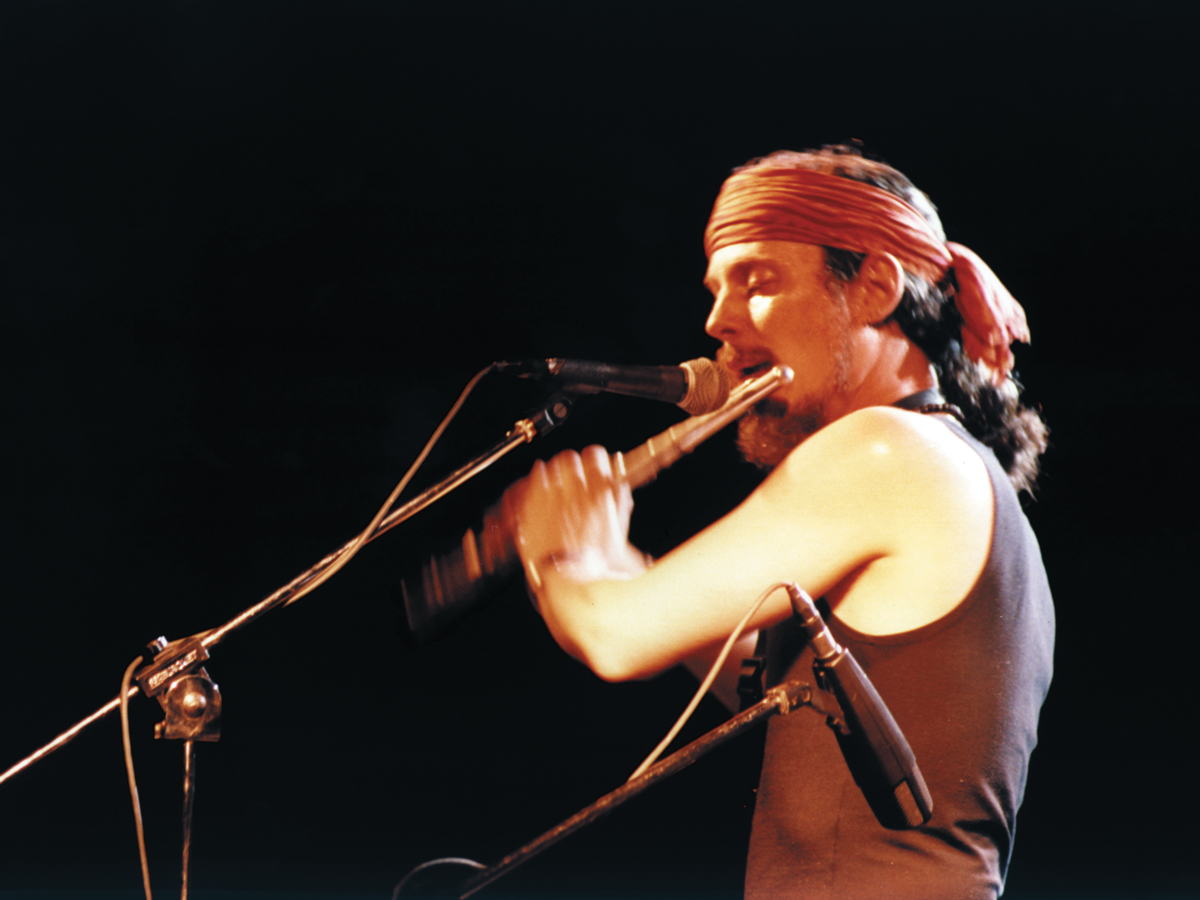Affirmation, honesty, passion, risk, the coherence of successful collective enterprise; all of the things we expect from the strongest and most lasting jazz permeated the music of Thomas Chapin.
In every note he played - and most certainly between September 1989 (when the Thomas Chapin trio featured in this collection played its first engagement) until the leukemia that took Chapin's life on February 13, 1998 interrupted his ascendance - Chapin was a study in the testing and exceeding of limits. In every live set and on every recording, he plunged headlong into the musical abyss and responded with a driven yet upbeat concept that held humor, cataclysm and contemplation in rare equilibrium. The sound tapestries that resulted - solidly rooted in a tradition Chapin knew intimately, yet straining that tradition's boundaries at every turn - were both lucid and combustible. They remain just as inspiring now that Chapin is gone. "The point is to stay awake and alive to what is going on," he wrote in 1996; and the sounds Chapin left assure that he continues to be a living force.
One of Chapin's greatest gifts was his ability to always connect with what remains a growing audience for his unique creations. "I'm constantly amazed that we can play anything, with no restrictions, and people always seem to relate to it," he told me during a 1996 conversation; and indeed Chapin's most singular triumph was his ability to always leave listeners exhilarated. In an era when homogenization in the service of a misperceived authenticity threatened the true jazz spirit, Chapin persuaded an astute and stunningly diverse legion of listeners that creative improvisation was something to be celebrated rather than feared.
“I am constantly amazed that we can play anything, with no restrictions, and people always seem to relate to it.”
An honest appraisal of the universe of improvised music created in the decade of his activity as a bandleader should persuade all but the most doctrinaire that Thomas Chapin Trio was one of the definitive artists of the 1990s. Not the most heavily exposed or fashionable, perhaps; but a musician who got at the emotional and spiritual nub of what jazz is supposed to be about as successfully and consistently as anyone working during the period. Chapin and his trio are identified with the Knitting Factory, the club and label often prone to ask "What is Jazz?," yet there was never debate about the term's application to Chapin's music. The necessary components were too clear to miss: swing-based rhythms, a melodic phraseology inflected at its root with the blues idiom, a sense of sound as nuance, the strategic application of riffs and breaks, faith in and command of collective spontaneity. Chapin's trio radiated glee from the bandstand when it put these skills to work, and received affirmaation in kind from the club and concert and festival listeners it delighted. Like the classic jazz bands, it fused players and listeners and elevated spirits, a state of mind Chapin experienced first-hand during his own apprenticeship with Lionel Hampton. Such fervor and all-out commitment recall the George Adams-Don Pullen Quartet, a unit that shattered inside/outside and esoteric/populist distinctions in the 80s the way Chapin and his trio did in the 90s.
This ability to connect with listeners while refusing to coast arose directly from Chapin's deepest beliefs. "Music was a state of being, it was never something I had to consider," he explained in 1996. "I've never taken a day gig, and have always supported myself playing music. And the music I play is what I need to do. If I was playing weddings, I would die spiritually. There is a drawing power of the spirit, and if you're lucky, you get aligned with it." This attitude helps explain the strength and nobility Chapin displayed in the final year of his life, after his illness had been diagnosed. Equally important, Chapin's dedication allowed him to hone and expand his gifts until that point, and to produce the glorious sounds heard in this collection, which includes the seven trio albums released individually by Knitting Factory Records, plus a bonus disc of live performances.
by Bob Blumenthal, jazz writer-critic, The Boston Globe

